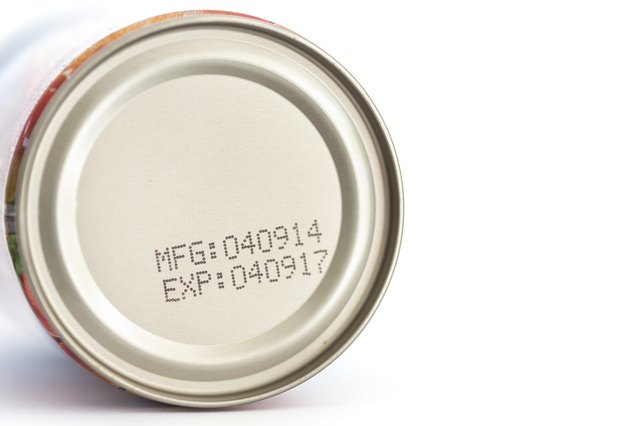44 how to read food labels australia
PDF Food label reading guide - nutritionaustralia.org • The more stars out of five, the healthier the food or drink choice. Food labels Reading food and drink labels can help us make healthy choices. Food and drink labels will include information about the product, where and when it was made and a statement of ingredients, as well as any warnings or allergen statements. Most food or drink packages Reading food labels to avoid food allergies and ... Reading food labels to avoid food allergies and intolerances. In Australia all packaged foods must include a food label. Food labelling is governed by Food Standards Australia New Zealand (FSANZ). Nutrition information is found in two places on a food label: the ingredient list and the nutrition information panel.
How to read a food label - Healthy Kids Phone 02 9876 1300 or 1300 724 850 for those outside of Sydney.

How to read food labels australia
How to read food labels in Australia: Find nasties and ... My advice for reading food labels is to look at the 'per 100g' values, as 'per serve' can often be misleading if you're likely to eat more than the suggested serving size. The 'per 100g' column is also the most useful for comparing products to assess their sugar, protein, sodium and fat content. Food labelling - NSW Food Authority Food labelling. All food sold in Australia must comply with the Australia New Zealand Food Standards Code for labelling. Sometimes there are other requirements too - for example, total weight and measure statements are regulated by the National Measurement Institute. Everything said about a food on the label is also subject to Australian ... How to read food labels | New Idea Magazine Here are some tips on how to read food and nutritional labels: Nutritional panel Considered the most valuable part of the label, this panel shows the average amount of energy - measured in kilojoules - protein, fat, saturated fat, total carbohydrates, sugars and sodium in a product.
How to read food labels australia. PDF Reading food labels - Queensland Health Reading food labels . Understanding how to read food labels can help you make healthy food choices. Food Standards Australia and New Zealand (FSANZ) regulates food labelling in Australia. Most packaged food and drink must have a nutrition information panel. Exceptions include those in very small packages, some baked products and take-away food ... Labelling poster - how to read food labels This interactive resource explains the food labelling requirements set out in the Food Standards Code and what that information means. Click on the numbers to find out more about food labelling. A useful poster is also available. You can download a copy here (PDF 372KB), or for a printed A2 version please email information@foodstandards.gov.au. Understanding Food Labels | WW Australia How to read product labels to make healthy choices Being armed with information like how much saturated fat, sugar and protein a product contains in a single serve, as well as whether it's rich in healthy nutrients like fibre and calcium, is key to making healthier food choices. Here's what you need to know. The nutrition information panel Healthy Eating Active Living - How to read food labels and ... Check the Nutrition Information Panel The Nutrition Information Panel is usually on the back or side of the packet, often in a table called 'Nutrition Information'. The panel lists the amount of certain nutrients in a serve and in 100g or 100ml of the product.
How to understand food labels - Eat For Health The Nutrition Information Panel on a food label offers the simplest and easiest way to choose foods with less saturated fat, salt (sodium), added sugars and kilojoules, and more fibre. It can also be used to decide how large one serve of a food group choice or discretionary food would be and whether it's worth the kilojoules. Food labels: a guide to reading nutrition labels - MyDr.com.au A list of food additive numbers and names is available from Food Standards Australia New Zealand. Allergens Any ingredient that is known to cause severe allergic reactions in some people (e.g. peanuts, tree nuts, wheat, fish and shellfish, milk, eggs, sesame seeds, soy) must be declared on the label, even if there is only a very small amount of ... How to Understand and Use the Nutrition Facts Label | FDA The following label-reading skills are intended to make it easier for you to use the Nutrition Facts labels to make quick, informed food decisions to help you choose a healthy diet. Reading food labels - Food Allergy Education How to read food labels that meet the new PEAL law Under the new PEAL law, common food allergens are to be listed with the plain English name alongside the actual ingredient name. This is shown in the label example below. In the statement of ingredients, declarations must: Be in bold font. Have bold font contrasting distinctly with other text.
Food labels - Better Health Channel The best way to tell whether food is safe to eat is to: • Check the use-by or best-before date when food shopping. • Keep an eye on the use-by or best-before dates on the food in your cupboards, refrigerator and freezer. • Never eat any food that is past its use-by date, even if it looks and smells okay. List of ingredients on food labels Reading food labels - Heart Foundation How to read a food label. The first step is to find the nutrition information panel. It's usually located on the back or side of the product packaging. Once you've found the nutrition information panel, the next step is to locate the ingredients - often they're to the side or below the nutritional panel. Nutrition information panels ... Labelling - Food Standards The Food Standards Code includes the general labelling and information requirements (Chapter 1 of the Code) that are relevant to all foods, and sets out which requirements apply in different situations (for example food for retail sale, food for catering purposes, or an intra-company transfer). What's on a food label | NSW Food ... - NSW Food Authority How to read a label What's on a food label What's on a food label Food name The name of a food must be sufficient to indicate its true nature. For example, 'fruit yoghurt' should contain fruit. If it is fruit flavouring, the product should say 'fruit flavoured yoghurt'. For more visit FSANZ.
Understanding food labels fact sheet - NDSS Food labels will typically include a nutrition information panel, list of ingredients, the 'use by' or 'best before' date and identify potential food allergens and additives. Food labels also tell you the amount of carbohydrates (carbs) you eat and drink. This can help you manage your blood glucose levels.
How to Read Food Labels & Understand Nutrition Info Panel ... Food labels can be tricky. Australian food labels generally have two columns: One shows the nutritional value of a single serve and the other shows the nutritional value per 100g/ml.. It's important to know the difference and have your glasses on when you read the label.
Food label reading guide | Nutrition Australia What to look for when reading food and drink labels (per 100g) Health Star Ratings The Health Star Rating is a front of pack labelling scheme which can be used to make healthier food choices at a glance. The rating range is from ½ - 5 stars and the more stars, the healthier the choice. Recommended minimum star ratings for food and drink categories
Label reading - Baker Label reading. This fact sheet gives you guidance on understanding how to read nutrition information panels to help you identify healthy choices. This fact sheet will allow you to identify processed and packaged foods that are: lower in energy (kJ) lower in saturated and trans fat. lower in sugar. lower in sodium (salt)
How to Read Food Nutrition Labels - nib Understanding nutrition labels, and whether your food is good for you or not, can be difficult. That's why we've put together an easy guide explaining the A-Zs of food nutrition labels. ... How to read food nutrition labels. An easy guide explaining the A-Zs of your nutritional label.
Understanding food labels: How to read Australian ... Under FSANZ rules, these labels must reveal how much of the following is in the product: Energy (in kilojoules or both kilojoules and calories) Protein Fat Saturated fat Carbohydrates Sugars Sodium (salt) These contents must show average amount per 100g (or 100ml for liquids) and per serving. A breakdown of what's on nutrition labels
Your easy guide to reading and understanding food labels ... Your easy guide to reading and understanding food labels. Browsing the supermarket aisles in search of healthy foods can be confusing; There are stars, information panels, health claims, and many other things to consider. So we've created this guide to food labels to help you make healthy and informed choices when you're at the supermarket.
How to read food labels - healthdirect The label will tell you: the name of the product, describing accurately what it is the brand name what ingredients it contains (listed in order from largest to smallest by weight) nutritional information (such as average amount of energy, fat, protein, sugars and salt)
PDF how to understand food labels - Eat For Health Instead learn a few simple label reading tips to choose healthy foods and drinks, for yourself. You can also use the label to help you lose weight by limiting foods that are high in energy per serve. 100g Column and Serving Size If comparing nutrients in similar food products use the per 100g column.
How to read food labels | New Idea Magazine Here are some tips on how to read food and nutritional labels: Nutritional panel Considered the most valuable part of the label, this panel shows the average amount of energy - measured in kilojoules - protein, fat, saturated fat, total carbohydrates, sugars and sodium in a product.
Food labelling - NSW Food Authority Food labelling. All food sold in Australia must comply with the Australia New Zealand Food Standards Code for labelling. Sometimes there are other requirements too - for example, total weight and measure statements are regulated by the National Measurement Institute. Everything said about a food on the label is also subject to Australian ...
How to read food labels in Australia: Find nasties and ... My advice for reading food labels is to look at the 'per 100g' values, as 'per serve' can often be misleading if you're likely to eat more than the suggested serving size. The 'per 100g' column is also the most useful for comparing products to assess their sugar, protein, sodium and fat content.














Post a Comment for "44 how to read food labels australia"